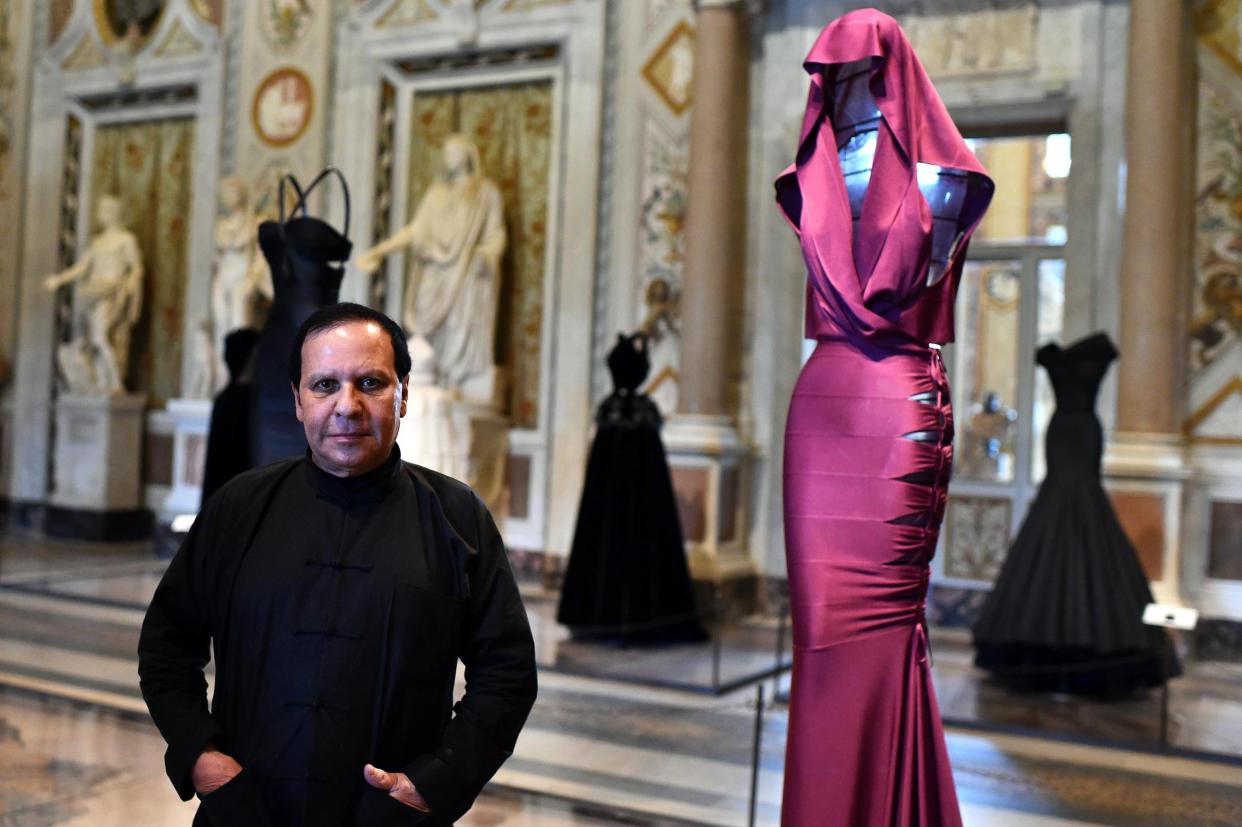Fashion designer Azzedine Alaïa dies aged 77

Tunisian-born fashion designer Azzedine Alaïa, an iconoclast who dressed famous women from Hollywood to the White House, has died aged 77.
Tributes to his influence on fashion poured in from around the world after the French Haute Couture Federation announced Alaïa’s death on Saturday.
Known as a secretive fashion rebel, Alaïa was based in Paris for decades but did not take part in the French capital’s seasonal fashion frenzy or flashy ad campaigns. Instead, he showed privately on his own schedule.
He was dubbed the “king of cling” for the form-fitting designs he first popularised during the 1980s and updated over the decades.
Naomi Campbell was a favoured model, and Michelle Obama wore his designs while first lady.
“Azzedine Alaïa was a true visionary, and a remarkable man,” said Vogue editor-in-chief Edward Enninful. “He will be deeply missed by all of those who knew and loved him, as well as by the women around the world who wore his clothes.
“The generosity of his spirit and genius of his designs will never be forgotten.”
Nina Garcia, editor of Elle magazine and a judge on fashion design reality TV programme Project Runway, described Alaïa as a “legend and true original”.
“We will miss this creative genius,” she added.
A fashion legend and true original. We will miss this creative genius #rip #azzedinealaia https://t.co/Vk2F72pbFq pic.twitter.com/E7BoaEilBf
— Nina Garcia (@ninagarcia) November 18, 2017
The French Haute Couture Federation gave no details on the cause of Alaïa’s death.
Born to wheat farmers in Tunis in 1940, Alaïa said his love of couture was inspired by his glamorous twin sister. He read Vogue in his youth and later lied about his age to win a place studying sculpture and the human form at the Tunisian capital’s Institut Supérieur des Beaux Arts.
“When I realised I couldn’t be an amazing sculptor, I changed direction,” he told The Independent in 2015.
He segued into fashion, assisting a dressmaker, before moving to Paris in 1957 where he landed a job as a tailor for Christian Dior, just as the Algerian war intensified. Fresh off the boat, he was dismissed five days later for having incorrect immigration papers.
Alaïa then worked for Guy Laroche for two seasons, taking up residence with the first of a series of high-society patrons, the Comtesse de Blégiers, who offered him a temporary home in exchange for services as dressmaker and occasional babysitter.
Alaïa later said: “From two seasons at Guy Laroche I learned how. From the last elegant women in the world, I learned what.”
Alaïa dressed the demanding clients of French haute couture – Picassos, Rothschilds, Mitterands – as well as Hollywood stars such as Greta Garbo.
His first ready-to-wear collection in 1980 was a commercial smash hit and his business would grow to an annual turnover of £40m a year.
But he did not consider himself a part of the fashion industry and rejected the idea of seasons.
“I always feel free – I feel really free,” he said. ”When I don’t want something, I don’t make it. Even if there’s finance behind it, if I don’t feel it, I don’t do it. I always feel free, this is my strength. Truly, I don’t need much to live.”

 Yahoo News
Yahoo News 
